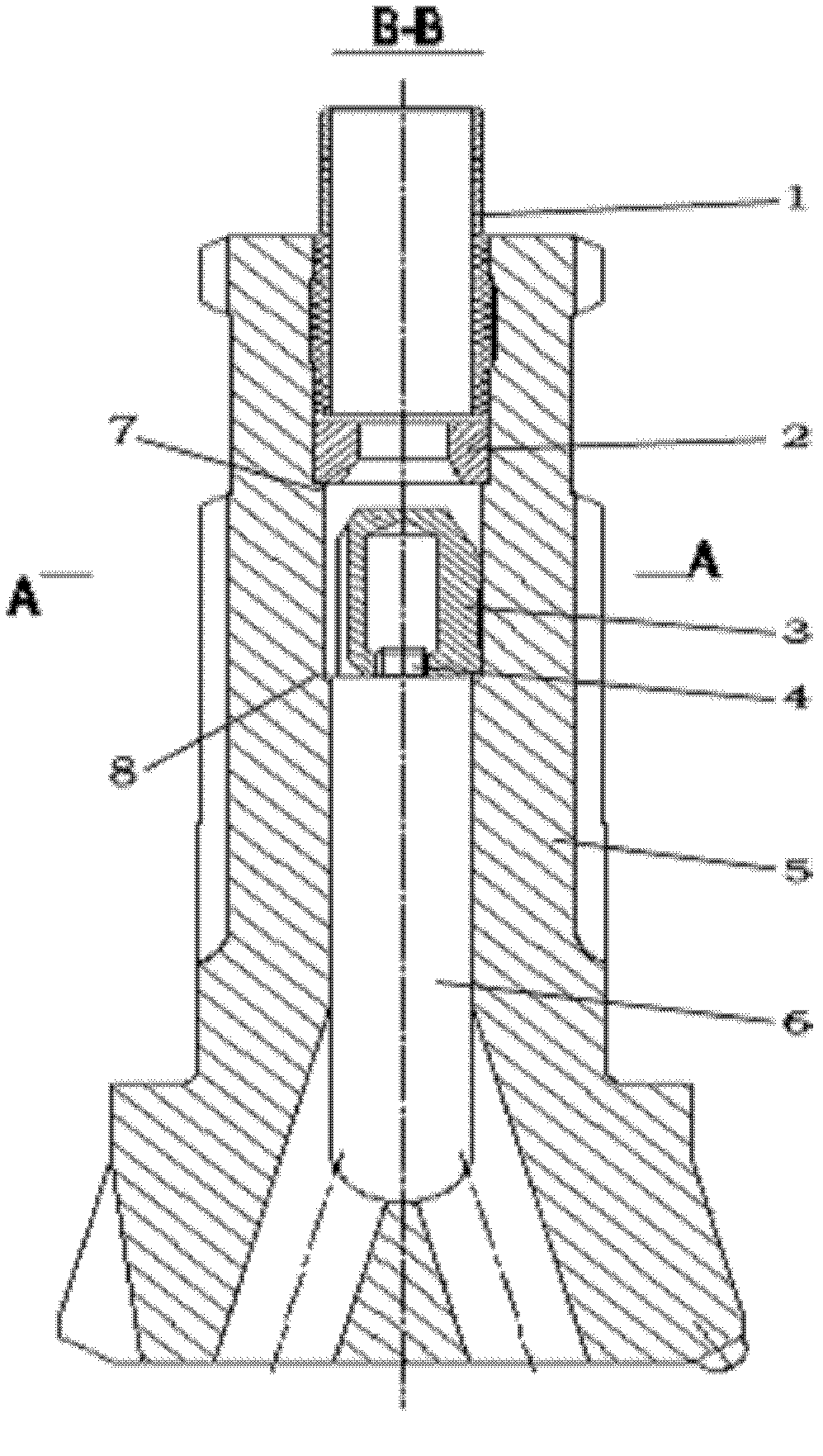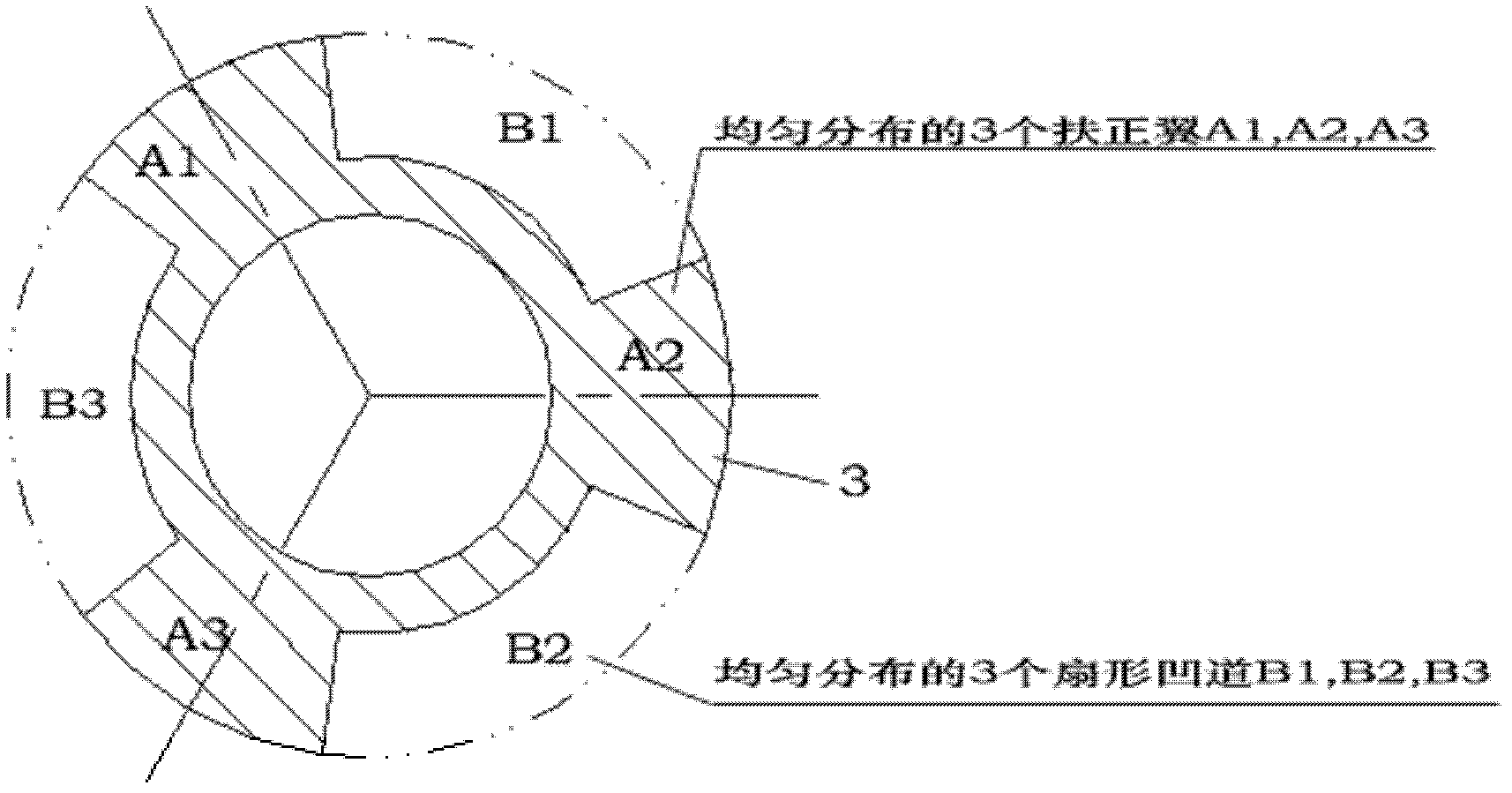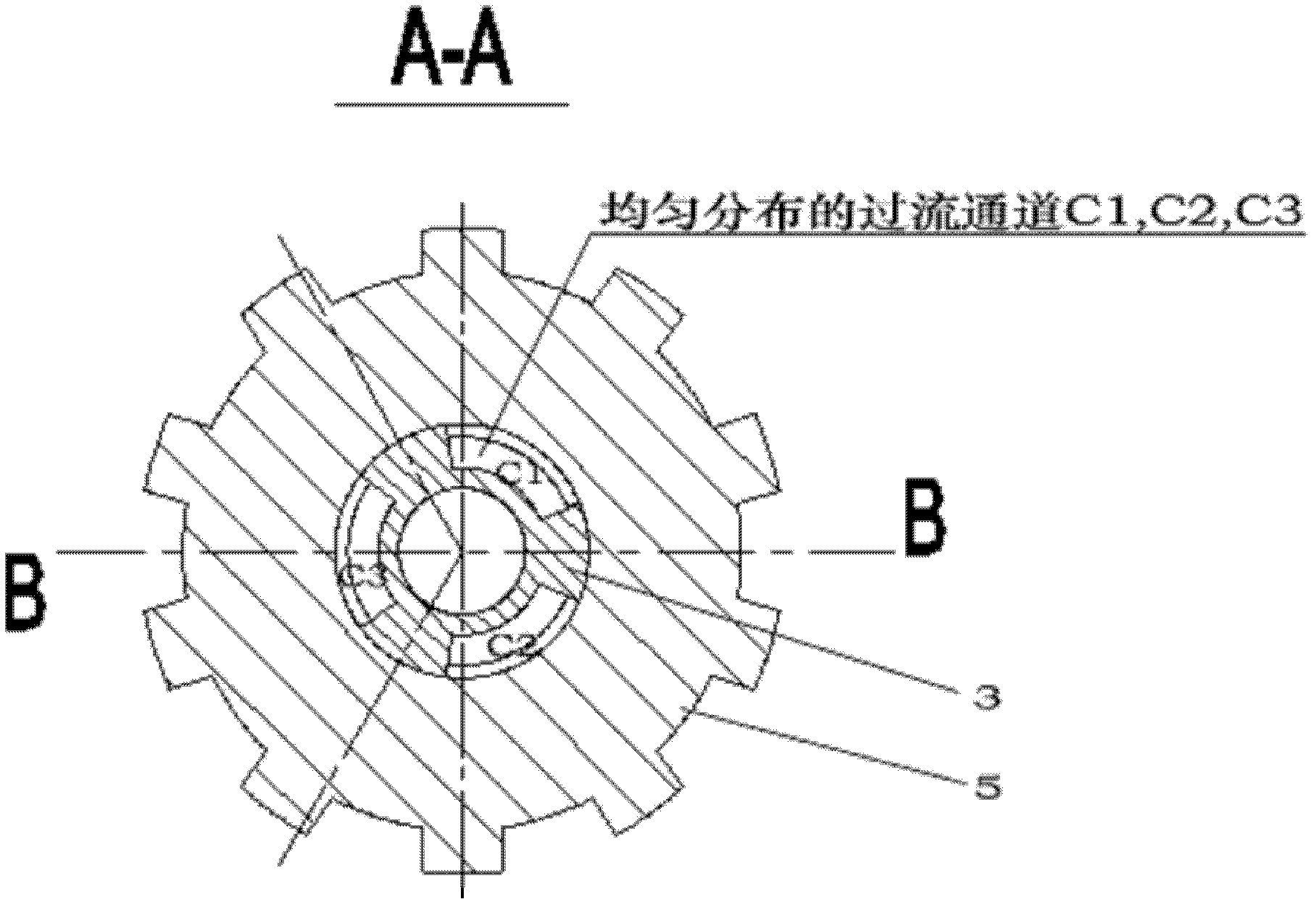Backward-flowing prevention air hammer drill for foam drilling
An anti-backflow and air hammer technology, applied in the field of oil and gas well drilling, can solve problems such as non-working, affecting normal drilling, and air hammer stuck, and achieve the effect of reducing drilling costs and reducing the number of trips.
- Summary
- Abstract
- Description
- Claims
- Application Information
AI Technical Summary
Problems solved by technology
Method used
Image
Examples
Embodiment Construction
[0022] The following will clearly and completely describe the technical solutions in the embodiments of the present invention with reference to the accompanying drawings in the embodiments of the present invention. Obviously, the described embodiments are only some, not all, embodiments of the present invention. Based on the embodiments of the present invention, all other embodiments obtained by persons of ordinary skill in the art without making creative efforts belong to the protection scope of the present invention.
[0023] In the present invention, a conical one-way valve is provided on the upper end of the center hole of the air hammer drill bit. When the single root is connected and the drilling is stopped for maintenance, if the two-phase fluid formed by formation water and cuttings enters the water hole of the drill bit, it can be forced by buoyancy. Close the one-way valve to block formation water and cuttings from entering the air hammer to avoid sand sticking of the...
PUM
 Login to View More
Login to View More Abstract
Description
Claims
Application Information
 Login to View More
Login to View More - R&D
- Intellectual Property
- Life Sciences
- Materials
- Tech Scout
- Unparalleled Data Quality
- Higher Quality Content
- 60% Fewer Hallucinations
Browse by: Latest US Patents, China's latest patents, Technical Efficacy Thesaurus, Application Domain, Technology Topic, Popular Technical Reports.
© 2025 PatSnap. All rights reserved.Legal|Privacy policy|Modern Slavery Act Transparency Statement|Sitemap|About US| Contact US: help@patsnap.com



